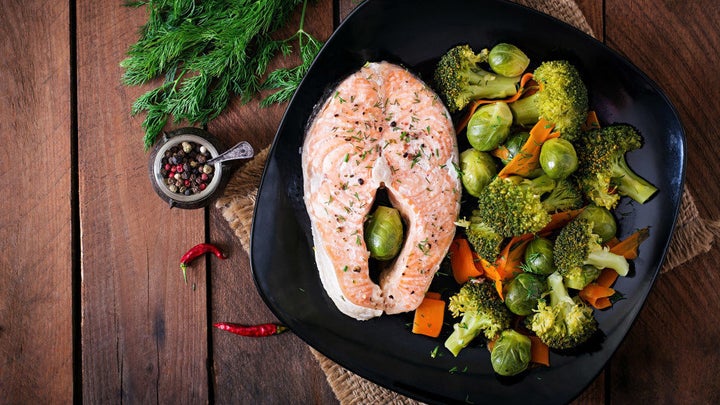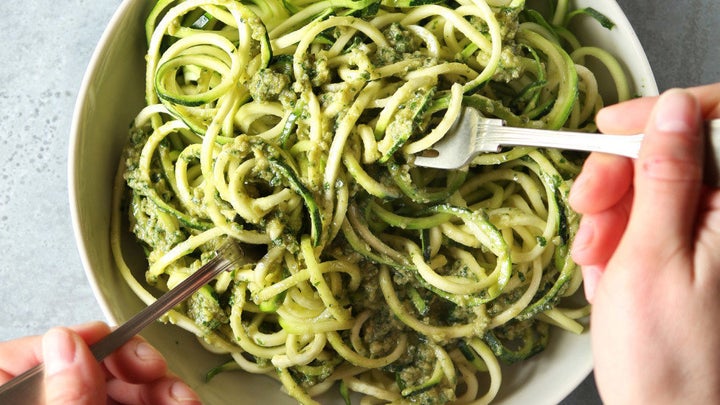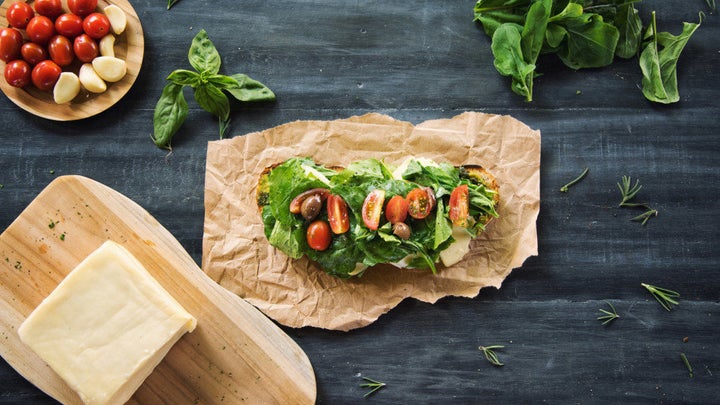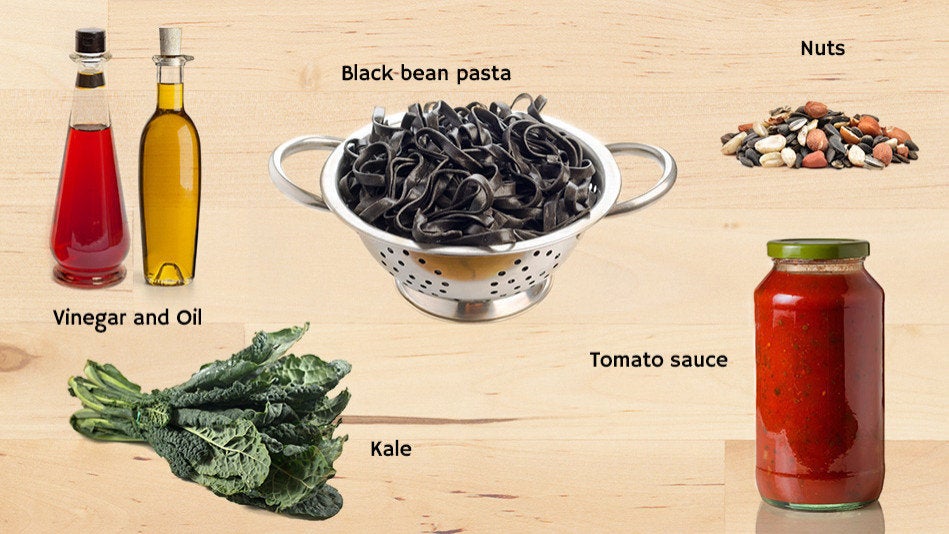
They check in before dinner.
These days, you’d be hard-pressed to find a nutritionist who doesn’t plan her meals ― but Blaire Newhard, a dietitian in Oceanside, CA, has one caveat to the process: Be flexible. Every day before dinnertime, she and her husband check in with each other to compare notes on their day’s activities, because sometimes the events of the day don’t pair with the meal they’ve got planned. Did they get to exercise, or were they stuck at their desks for most of the day? Was there a 3 p.m. office-birthday celebration, or did they not snack all day? Then, they can figure out whether it would make sense to eat that hearty turkey chili they’d initially planned for the night, or if the salad with poached salmon would be more appropriate. Having a 4 p.m. “How’s the day going?” check-in with yourself, or your spouse, is a great way to ensure you end the day with the meal your body needs.

They begin every meal with a fruit or vegetable.
Paying attention to food order ― that is, eating each component of your meal in a precise progression ― may sound a bit obsessive, but Kristen Smith, MS, RD, LD and a spokesperson for the Academy of Nutrition and Dietetics, swears by it, at least when it comes to one food group. She always starts her meal with a fruit or vegetable, for two reasons. First, it helps ensure she won’t be too full later for those vitamin- and mineral-rich foods. Second, fruits and veggies tend to be packed with fiber, so they provide satiety ― meaning she winds up eating less overall.

They go screen-free ― at every single meal.
We know that eating dinner in front of the TV can lead to mindless eating. There are additional benefits to eating without distraction, though. Not only are you less likely to overeat in the moment ― you’re also less likely to indulge in late-night snacking later (research backs this up). Smith takes this practice a step farther by also putting her phone away and closing her laptop when it’s mealtime to truly savor a screen-free meal.

They make food “swaps” their norm.
Is there a tipping point for when nutritious alternatives to unhealthy foods become the rule, rather than the occasional option? Newhard thinks so. She began replacing sour cream with low-fat or fat-free plain Greek yogurt years ago, and never looked back. Whether she’s grocery shopping for taco night or making a dip for crudités platter, she automatically reaches for yogurt every time, because it’s lower in cholesterol, saturated fat and calories yet still tastes tangy, with a thick, creamy texture. Consider choosing one healthy swap ― yogurt for sour cream; zucchini for spaghetti; cauliflower for rice ― and make it your new go-to. Research shows that once you establish an activity and repeat it enough (the average length of time is 66 days), it becomes a habit you won’t think twice about.

They have their own way of eating sandwiches.
When we think of open-face sandwiches, the ones that first come to mind are croque messieurs and tuna melts. Yet any sandwich can be eaten this way ― which is exactly what Kristen Gradney, MHA, RDN, LDN, does whenever she eats a sandwich, whether it’s chicken salad, turkey and Swiss or hummus and veggies. Ditching the second slice of bread saves calories and carbohydrates, and, since Gradney uses a fork and knife to eat it, she ends up taking longer to finish her meal, and fills up more quickly.
